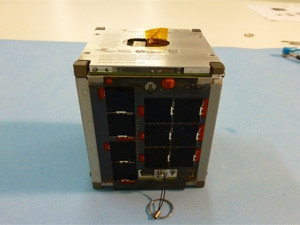
The Department of Trade and Industry (DTI) contributed R1.7 million to the country's first nanosatellite launch.
In a statement released by the department today, it says the contribution was made to the "Engineers in Training" programme through the department's Aerospace Industry Support Initiative.
SA's first CubeSat satellite, ZACUBE-1, was built by CubeSat students at the French South African Institute of Technology (F'SATI) and launched from Russia last Thursday. The nanosatellite, measuring 10cm^3 and weighing 1.2kg, will be used to collect data on space weather.
The South African Council for Space Affairs, a DTI space council responsible for regulating space activities in the country, facilitated the launch of the satellite by issuing a licence to launch and operate a CubeSat to the Cape Peninsula University of Technology (CPUT), where F'SATI is based.
Chief director of advanced manufacturing at the DTI, Nomfuneko Majaja, says the department is excited to have been part of the contributors to the development of the first nanosatellite on the African continent.
"The DTI is committed to supporting the space industry, including the capacity-building at our universities and other institutions of learning to ensure the space industry gradually moves towards reaching its full potential," she says. "More so that space technology is a catalyst for economic growth and development, as well as creation of high-level job opportunities in our quest to move to a knowledge-based economy."
The CubeSat, which was nicknamed Tshepisosat by the students, was placed in orbit at an altitude of 600km and will orbit the earth up to 15 times per day. The satellite uses a high-frequency beacon transmitter to help characterise the earth's ionosphere and to calibrate the South African National Space Agency's auroral radar installation at the SANAE-IV base in Antarctica.
The team at CPUT is already developing ZACUBE-2, which will be three times larger than the first.